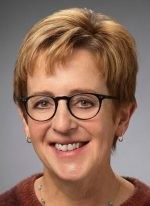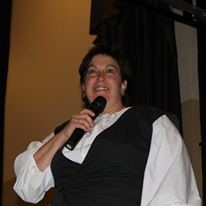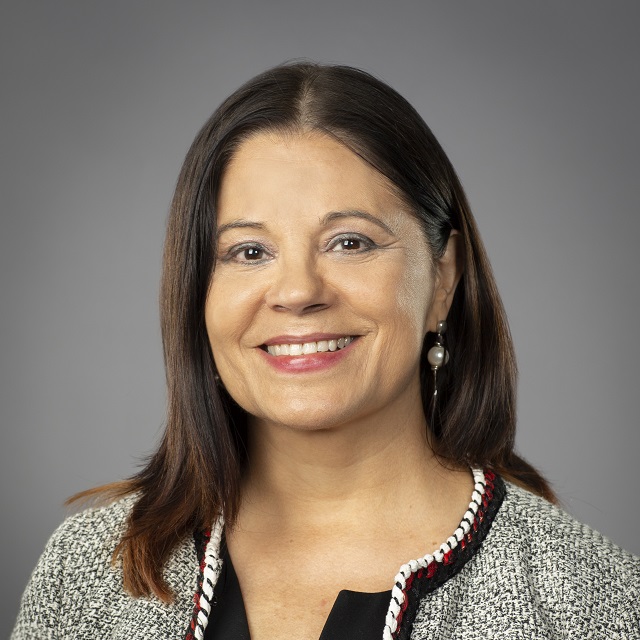Commemorating Nevada’s Rich Basque Heritage
The recently donated Basque Shepherd Statue to be celebrated with a reception on Day of the Basque Diaspora, September 8
One of the many jewels of the University of Nevada, Reno is its Center for Basque Studies, one of the world’s largest collections of Basque-related materials, over 55,000 volumes, itself a reflection of Nevada’s important Basque diaspora. On September 8th, the William A. Douglass Center for Basque Studies will be hosting, on the Day of the Basque Diaspora, the formal reception for the Basque Shepherd Statue that was recently donated to our university.
Today I am talking with Michonne Ascuaga, former CEO of John Ascuaga’s Nugget and Advisory Board member of the Center for Basque Studies, and Kate Camino, Administrative Assistant at the Center for Basque Studies, both, principal organizers of this significant event to learn more about the celebration, the statue, but also about Basque history, the diaspora and the longstanding interconnections with Nevada.
Since at least the summer months anyone walking by Knowledge Center is pleasantly surprised to encounter an imposing and impressive statue of a shepherd. What can you tell us about this work of art: who commissioned it, and, how and why was the University granted this gift?
- Michonne: My father, John Ascuaga, commissioned sculptor Doug Van Howd in early 1998 to create and install a statue of a Basque sheepherder to commemorate the opening of the Nugget’s new “Restaurante Orozko.” With this newest restaurant, Dad paid tribute to his parents and other Basque immigrants. Both the décor and the menu reflected the flavors and traditions of the Basque country. The name comes from the village in northern Spain from which my father’s father came. Not long after the sale of the Nugget, we started conversations with members of the Center for Basque Studies around the idea of moving “The Shepherd” to campus, a permanent home close to the Center. In 2017, Bill Douglass, founder of the Center, met with Anthony Marnell, the Nugget’s new owner, to discuss donating the statue. Numerous individuals and companies came together to move the piece, construct the foundation, and place it in its new location. All time and materials were donated.
It is often surprising to those who are still new to the history of Nevada to learn how actually diverse our state is—almost more diverse for most racial/ethnic groups than the national averages. Even knowing this fact, it is still, I would say, an unexpected discovery for many to grasp the important and longstanding history of the Basque diaspora and presence in the state of Nevada. What can you tell us about that history, how were those socio-geographical connections created, and why, and how are they experienced in the present?
- Kate: Many Basques came to Nevada during the Gold Rush but realized that feeding the men in the mining camps could be more lucrative than actually mining for gold. Nevada was also a free-range state, which allowed livestock to graze freely. This began a tradition of chain migration, where one family member would sponsor another, resulting in a strong Basque presence in the northern part of the state. Besides raising livestock, many Basques in the early days of immigration also created boarding houses, which provided a place for herders to stay while in town. Importantly, those boarding houses also became a life-line for new comers, providing guidance on such needs as banking and medical services, as well as providing English translation services, if needed. These boarding houses were often established near the railroad stations, and many of them still exist today as Basque restaurants. In Reno, these include Louis’ Basque Corner and the Santa Fe; in Gardnerville, there is the JT Basque Restaurant, as well as the Overland.
The same was those boarding houses evolved, so has Basque culture. Basques are very proud of their heritage and have worked hard to preserve it in the United States. In 1959, a group of first-generation Basques, including John Ascuaga, organized the first National Basque Festival. This group included several prominent Basque names from the area, including John and Robert Laxalt, Peter Supera, Joe Micheo, Martin Esain, Dominique Gascue, Paul Parraguirre, John Ascuaga and Peter Echeverria. The event attracted Basques from all over the country, as well as officials from France and Spain.This festival still serves as the model for Basque festivals that take place all over the American West today.
Prior to the 1959 festival, many Basque communities also held annual Basque picnics, which further sparked the desire to have more organized outlets. Basque communities began to establish their own Basque clubs and entities, and in 1973, Basques from several communities came together in Reno to create what would become the North American Basque Organizations or NABO. Today, NABO includes 42 clubs and entities throughout the United States and Canada, as well as its most recent member club in Saint Pierre et Miquelon. NABO groups meet three times a year, including a convention that rotates among hosting clubs in the summer, making it the largest gathering of the year. The organization also hosts Udaleku, a two-week children’s camp where children are exposed to Basque music, culture, dance, sports and gastronomy; a national mus (Basque card game) tournament, and Kantari Eguna, or the Day of Basque song. Importantly, NABO also serves as a liaison with the Basque Government and other Basque federations around the world.
Can you share some memories and reflections on such notions as immigration, diversity and inclusion, with respect to the Basque community.
- Michonne: Two memories come to mind. First, around fifteen years ago, a Victrola along with a handful of vinyls surfaced from my dad’s twin sister’s basement. The player and records belonged to my grandparents. During the time of the Great Depression, they’d often open their home to other Basque immigrants and sheepherders. My grandmother would cook, and they’d end the evening playing Basque music. They all craved the connection to what was familiar. Decades later, my dad would play the Victrola over and over to anyone coming into his office, and he would always get emotional.
Fast forward ten years, we are driving through the farmland around Notus, Idaho, to the Ascuaga homestead. We are there for his twin sister’s funeral, and as we get within a mile of the farm, he points out the neighbors’ houses and the families who lived there – Shelps, Marshbanks, etc. They weren’t Basque, but they were my grandparents’ “friends for life”, their support system. They helped each other through good times and bad, and there were a lot of tough times.
Because Basque presence is indeed so pervasive in the state of Nevada, it is also clearly present in our university, as we can evidenced, among other things, in the extensive Basque last names that we encounter throughout the University—in faculty, students, staff. What can you tell those Basque descendants and just anyone, like me, who might want to attend the September 8th activity, on what to expect from the celebrations? (I know that there is going to be music, dancing, food and drinks, so be sure to let us know about those!)
- Kate: The event will serve as an opportunity to thank everyone who made the relocation of the statue possible, but also an opportunity to pay tribute to not only the Ascuaga family, but to all Basque immigrants and their families in the diaspora. The event will include Basque music provided by renowned Basque-American musicians, Jean Flesher and Jean Pierre Etchechury, as well as a tribute dance performed by local Basque dancer, Enrike Corcostegui. There will be presentations by the College of Liberal Arts, Dean Debra Moddelmog, Michonne and Stephen Ascuaga, Dr. Xabier Irujo, the Center’s Director, as well as other members of our Advisory Board. And of course, as any good Basque event, there will also be food and drink provided.
- Michonne: Absolutely, Kate! On September 8th, we will celebrate our heritage, our history and those who came before us. We are all connected in some way. It will be a lively event – music, food, drink and a chance to reconnect! All are welcome!
Register for the Basque Statue Celebration, September 8, 2021 from 4 to 6 p.m.
 Michonne Ascuaga served as Chief Executive Officer of John Ascuaga's Nugget Hotel and Casino, Sparks, Nevada, for many years. She is a graduate of Santa Clara University in Santa Clara, California, and earned an MBA degree from Stanford University. She sits on several boards, including the Santa Clara University Board of Regents, Sierra Arts Foundation, Nevada Women's Fund, and the Forum for a Common Agenda.
Michonne Ascuaga served as Chief Executive Officer of John Ascuaga's Nugget Hotel and Casino, Sparks, Nevada, for many years. She is a graduate of Santa Clara University in Santa Clara, California, and earned an MBA degree from Stanford University. She sits on several boards, including the Santa Clara University Board of Regents, Sierra Arts Foundation, Nevada Women's Fund, and the Forum for a Common Agenda.
 Kate Camino was born in Buffalo, Wyoming to Basque parents. Her father came to the states in 1938, while her mother was the first in her family to be born in the US. Through the USAC program (University Studies Abroad Consortium) in 1983, she was able to spend time as a student in the Basque Country which allowed her to learn Basque and improve her Spanish. Kate is the administrative assistant at the William A. Douglass Center for Basque Studies since 1998, where she additionally taught Basque language. She served as president of Reno’s Basque club Zazpiak Bat for two terms and was director of their dance group. In 2011, Kate was presented the Bizi Emankorra, NABO’s (North American Basque Organizations, Inc.), lifetime achievement award for which she presently serves as secretary and facilitator. In 2018, Udaleku, NABO’s Basque summer camp for children took place in Reno under Kate’s direction.
Kate Camino was born in Buffalo, Wyoming to Basque parents. Her father came to the states in 1938, while her mother was the first in her family to be born in the US. Through the USAC program (University Studies Abroad Consortium) in 1983, she was able to spend time as a student in the Basque Country which allowed her to learn Basque and improve her Spanish. Kate is the administrative assistant at the William A. Douglass Center for Basque Studies since 1998, where she additionally taught Basque language. She served as president of Reno’s Basque club Zazpiak Bat for two terms and was director of their dance group. In 2011, Kate was presented the Bizi Emankorra, NABO’s (North American Basque Organizations, Inc.), lifetime achievement award for which she presently serves as secretary and facilitator. In 2018, Udaleku, NABO’s Basque summer camp for children took place in Reno under Kate’s direction.













